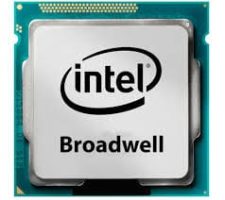Engineers designing microserver and other hyperscale workload systems based on the new Intel® microarchitecture codenamed Broadwell-DE will be able to quickly debug software and validate high-speed communications interconnects with ASSET® InterTech’s SourcePoint® and ScanWorks® platforms. The first generation of the Intel Xeon® Processor D family is based on the microarchitecture previously referred to as Broadwell-DE.
“The trajectory that cloud computing is following is unsustainable without breakthrough technology like the Broadwell microarchitecture and the Intel Xeon Processor D family, as well as other processor architectures that consume less power and require less space,” said Tim Caffee, vice president of design validation and test for ASSET InterTech. “Incorporating these high-speed and complex multicore processors into system designs is very challenging for engineers from both the software and hardware perspectives. Our SourcePoint and ScanWorks platforms have tools that accelerate debug and validation so new high-performance systems will get to market sooner.”
One of the new capabilities supported by the Intel Broadwell-DE microarchitecture is processor trace, a feature of the silicon that allows for the application of software debug trace techniques that can quickly isolate bugs in complex code environments. ASSET’s SourcePoint trace and debug tools give software engineers multiple views of executing code to rapidly reveal the root causes of bugs.
ASSET’s ScanWorks platform has advanced diagnostics tools that capture empirical performance data on the high-speed input/output (HSIO) serial buses of Intel’s Xeon®, Core™ and Atom™ processors. ScanWorks validates system performance by plotting the operating margins on a bus along either the voltage or timing dimensions, or both. The data captured by ScanWorks can be mined by statistical methods such as system marginality validation (SMV) to project the likelihood of performance degradations. Slim operating margins can lead to faults and failures later, resulting in user dissatisfaction. In addition, the ScanWorks HSIO tools are supported by a comprehensive ecosystem of training, services, documentation and technical support.
The Cloud and Internet-of-Things
As the Internet evolves toward pervasive cloud computing and the Internet-of-Things (IoT), the need for a new class of server system is emerging. In contrast to the full-featured, high-end servers of the past, this new generation of servers will implement many more processing cores and place a premium on low power consumption, small footprint and reduced total cost of ownership. Microservers are intended to process a narrow range of hyperscale workloads, such as serving static HTML elements, video transcoding, application delivery and other focused workloads.
The tools available on ASSET’s SourcePoint and ScanWorks platforms are ideal for debugging and validating architectures based on many processing cores connected by HSIO interconnects and running multithreaded software.


